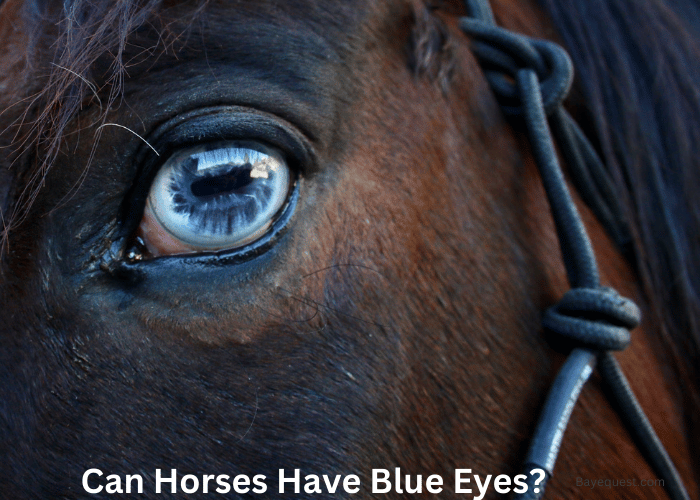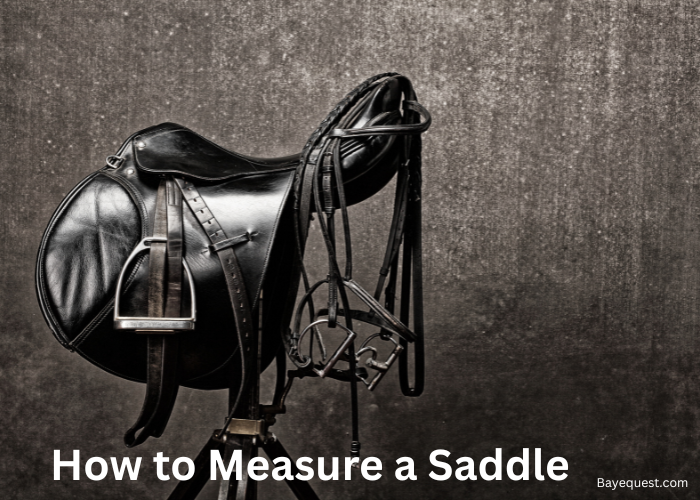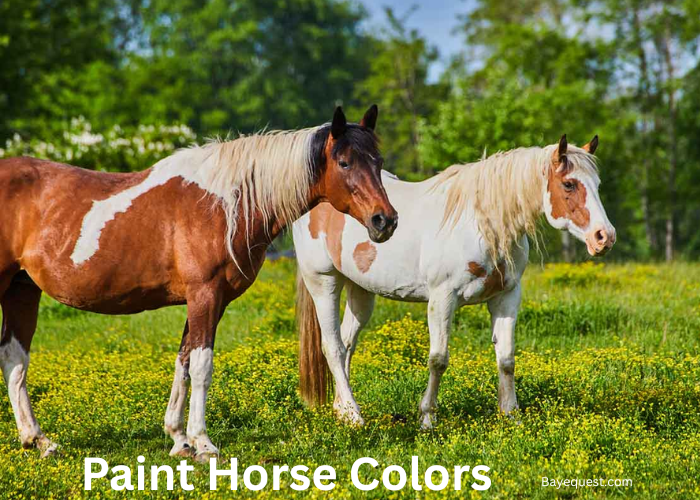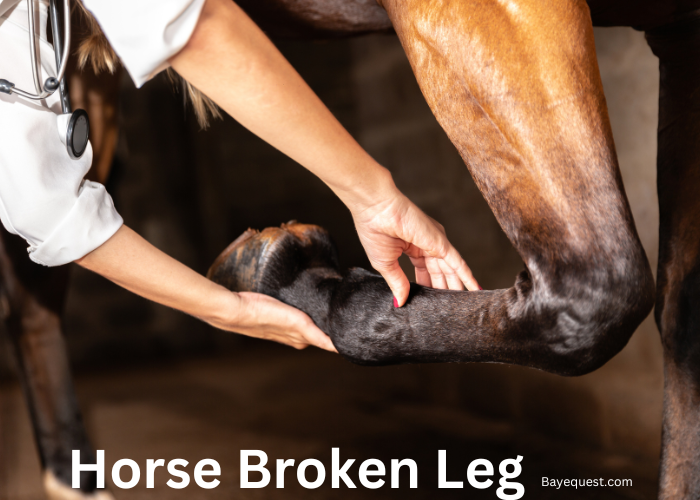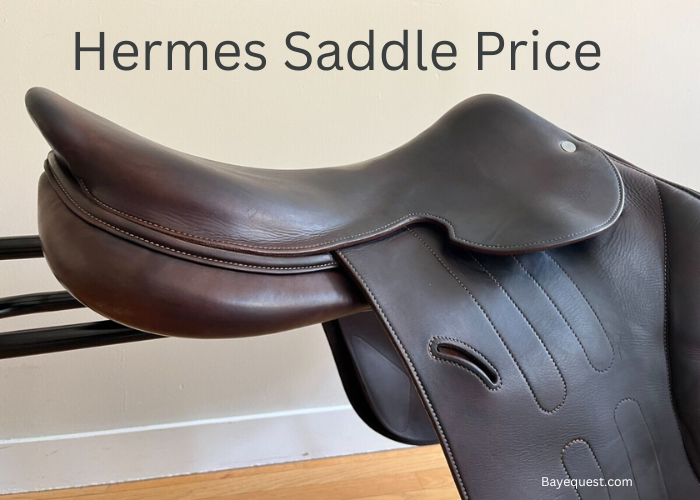There’s a chance you’ve heard a few interesting “facts” about blue-eyed horses. For example, many people believe blue-eyed horses see better. Interestingly, another group believes blue-eyed horses are blind or more likely to go blind.
We’ll bust some of the myths shortly. But first, we want to find out why some horses have blue eyes, the best blue-eyed breeds, and how to care for horses with blue eyes. Let’s jump right in.
Can Horses Have Blue Eyes? Key Takeaway
Yes, horses can have blue eyes. Horses naturally have either blue or brown irises. Some may exhibit heterochromia, with both blue and brown in one eye. Blue-eyed horses are just as healthy as brown-eyed ones, with no increased risk of eye disease. Blue eyes in horses occur due to a genetic variation.
What Causes Blue Eyes in Horses?
Unfortunately, the science isn’t clear. However, most studies correlate blue eyes to the horse’s skin color. Generally, darker horses with sufficient pigment are likely to have brown eyes.
Meanwhile, light-colored horses with low melanin are more likely to have one or more blue eyes.
Double-dilute-colored horses, such as Perlinos and Cremellos, are the likeliest to have blue irises. However, single-dilute-colored horses, such as Palominos, Buckskins, and Smoky Blacks, may also have blue eyes.
Why Do Some Horses Have One Blue Eye?
Horses with one blue and one normal eye have complete heterochromia, a benign genetic mutation that affects iris development. Though it can happen in any breed, it is common in pintos and paint horses.
Besides complete heterochromia, horses may suffer from central or segmental heterochromia. Complete heterochromia, the more common of the two, is characterized by two-colored irises.
Typically, the iris is one color. But a closer check reveals a different colored ring or two surrounding the pupil.
Meanwhile, segmental heterochromia causes a few different-colored patches (segments) in the horse’s iris.
How Common are Blue-Eyed Horses?
The blue iris isn’t common in horses. Although it’s not listed as rare or an endangered characteristic, you won’t come across a blue-eyed horse easily.
Of course, horses with blue eyes are even rare. For example, it’s extremely difficult to come across a blue-eyed thoroughbred, Arabian, or Morgan horse. Generally, it’s rare in solid-colored horse breeds.
Instead, if you desire a blue-eyed horse, you should look among light-skinned breeds, such as palominos, and patterned breeds, such as paints and pintos. Not all horses in these two categories have blue eyes.
But it’s easier to find a blue eyed horse among the heard.
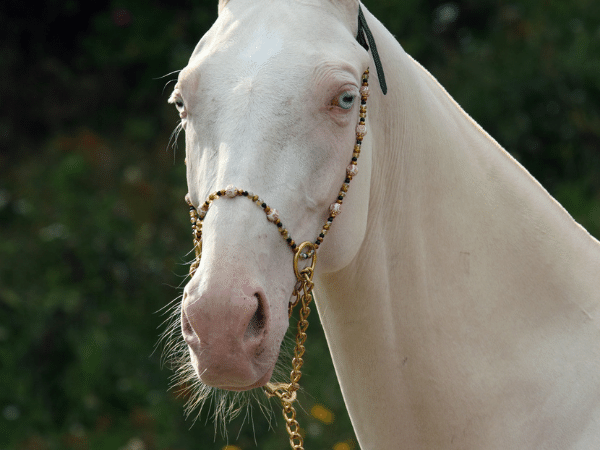
What’s the Link Between the Coat and Eye Color?
You’re probably wondering why light-colored horses are likelier to have blue eyes than darker horses. It has something to do with the underlying genes.
Light-colored horses are so-colored due to a unique crème gene. Single-dilute horses have one copy of the crème gene, while double-dilutes have two copies.
The crème gene is a dilution gene that washes away the horse’s base color, reducing the horse’s pigmentation. This is why blue-eyed horses almost always have pink skins.
But beware that light-colored horses are different from unpigmented (albino) horses. The latter have no melanin at all. Meanwhile, light-colored horses have some melanin but below the required threshold.
For example, Cremello horses are originally chestnut-colored. But they are double dilutes, with two dilution genes.
So, the original color is suppressed, resulting in a light cream coat, often with white tails. Cremellos with just one dilution gene are known as palominos.
Perlinos are double-dilutes, too, originally with a bay base. However, the dilution gene drastically changes the base coat to a cream color with red-tinged spots. Single-dilute Perlinos are known as buckskins.
Horse Breeds with Blue Eyes
Any horse breed can have a few blue-eyed individuals. However, a few breeds are likelier to have blue-eyed members than others. These include;
The American Paint Horse: The American Paint Horse is the breed most famous for blue eyes. Fortunately, it’s a popular breed with the second-largest registry in the US. So, finding one is easy. Pinto patterns characterize paint horses. (Read also: How much is a Paint Horse?)
The Appaloosa: Appaloosas are speckled horse breeds with a leopard complex gene. They are characterized by tiny spots covering part of the entire body. But the underlying coat is often diluted, typically a palomino or buckskin. Therefore, blue-eyed members are common within the breed.
Akhal-Tekes: The Akhal Teke is a golden-colored horse with a thin, opaque hair structure that gives off a shiny sheen. But they, too, have palomino or cream-based skin. Therefore, you can easily find blue eyes among the breed members.
The Gypsy Vanner: Popular as the Vanner, the Gypsy Vanner is an affectionate pinto-coated draft horse that forms unmatched bonds with humans. So, it’s nice that the breed often has a few blue-eyed members.
Unfortunately, blue eyes are rare in solid-colored stock and thus highly prized among these breeds. The horse breeds most unlikely to have blue eyes are;
- Thoroughbreds
- Morgan horses (Also, find the price of a Morgan horse in our guide.)
- Arabian horses
Strangely, blue eyes are rare among white horses, even though white is light. So, don’t expect to see blue-eyed Lipizzaner, Camargue, and Connemara horses soon.
Read: Best Horse Breeds for Jumping
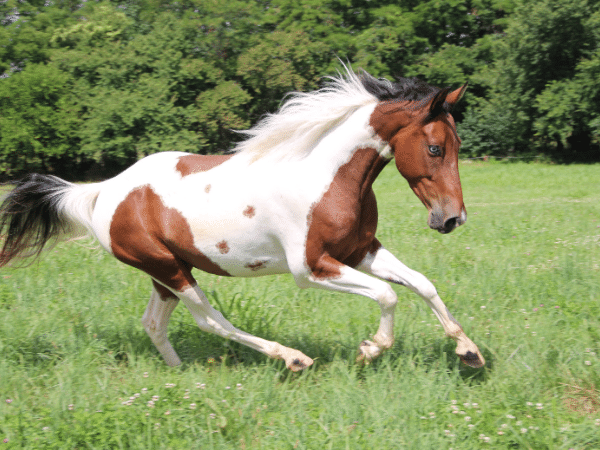
Do Black Horses Have Blue Eyes?
Yes, you can find blue-eyed black horses. But they are the rarest. Instead, true black horses have black skin, black hair coat, and brown hair due to an abundance of melanin. Rarely do they have reddish or brownish hair.
Nonetheless, a few black horses have pink skin under the eyes. Where this happens, the horse may have blue eyes.
Bursting Common Myths About Blue-Eyed Horses
We now know a little about blue-eyed horses to make an informed purchase decision. But we know you’re probably grappling with a few conspiracy theories about those blue eyes. Let’s bust some of the myths so you can rest easy.
Blue-eyed horses are prone to blindness
Myth: Some people believe that blue-eyed horses are blind or more likely to become blind.
Truth: Blue-eyed horses aren’t prone to blindness, nor are they more likely to develop eye infections than their brown-eyed counterparts. They see the world like other horses, with a similar clarity and depth perception as their peers.
However, most blue-eyed horses have pink rather than black skin around the eyelids. Pink skins lack melanin and thus are more susceptible to UV damage and sunburns, which may require emergency vet care. They are also at a greater risk of skin cancer.
Blue eyes signal inbreeding
Myth: Some groups believe blue eyes are a sign of bad breeding, inbreeding, or bad genetics.
Truth: No, blue eyes are not a sign of poor breeding. This myth originates from scientific research that shows humans with blue eyes descend from a primary ancestor. But this isn’t true for horses. Instead, blue eyes are often associated with white coloration and pink skin around the eyes.
Therefore, in horses, blue eyes indicate low melanin pigment density (vitiligo) rather than breeding habits. It isn’t exclusively hereditary.
Blue-eyed horses are intelligent
Myth: A few people believe that blue eyes signify intelligence and better decision-making.
Truth: Blue eyes alone aren’t a sign of superior intelligence. The color of the iris has nothing to do with IQ. Instead, it merely tells us about the horse’s genes.
You may come across reports claiming the contrary, some even saying blue-eyed animals are 1.5 IQ points smarter than their peers. Unfortunately, no scientific evidence supports this claim.
Interesting read: How Intelligent are Horses?
Blue-eyed horses have a temper
Myth: Some communities believe that blue eyes horse are unpredictable, skittish, and even aggressive.
Truth: This isn’t entirely true. Though you may find a few blue eye horses with a strong temper, there’s no link between aggression and eye color.
So, don’t be put off if you encounter an aggressive blue-eyed horse in the market. Proper training fixes the problem in no time.
Blue-eyed horses are sensitive to sunlight
Myth: There are many rumors that blue-eyed horses are UV sensitive, with some experts even advising against working them in the open sun.
Truth: Yes, blue irises are more sensitive to sunlight. Blue eyes, especially light blue irises, have less pigment. Thus, they’re more translucent, meaning greater light penetration. The result is increased light sensitivity.
So, protecting the horse from direct sunlight is wis, just like blue-eyed humans are advised to wear sunglasses.
Caring for Blue-Eyed Horses
Blue-eyed horses are beautiful and special in many communities. They are also highly valuable in most markets. But they are sensitive to light. Therefore, you want to take great care of your blue-eyed horses to preserve their value while protecting their health. Consider the following;
- Sunlight protection: Cover your horse’s eyes to shield them from direct sunlight. One potential solution is keeping them in shaded areas. Alternatively, consider a zero-grazing system so your horse spends most of the time in the barn. But if they must graze in the open, provide a lean-to for sun breaks.
- UV protection: Protecting the pink skin under the eyes from UV light reduces the risk of sunburns and cancer. Again, keeping them in shaded areas for the better part of the day is a great idea. Alternatively, consider special UV-blocking face covers whenever the horse leaves the barn.
- Schedule rides accordingly: Avoid riding blue-eyed horses in hot, sunny conditions. Instead, consider early morning and late evening rides to limit UV and sunlight exposure. Cover the horse’s eyes with a protective mask if you must take them out in the middle of the day.
- Ensure proper hygiene: The delicate pink skin is easily infected, often leading to itching, rubbing, and eventually preventable eye diseases. So, keep the area clean to ward off pests and other parasites. Also, sanitize it regularly and treat signs of damage promptly to prevent wounds.
- Schedule regular vet checks: A qualified veterinarian can spot potential issues early and provide the proper diagnosis. But more importantly, they’ll give you professional tips to take better care of your blue-eyed darling.
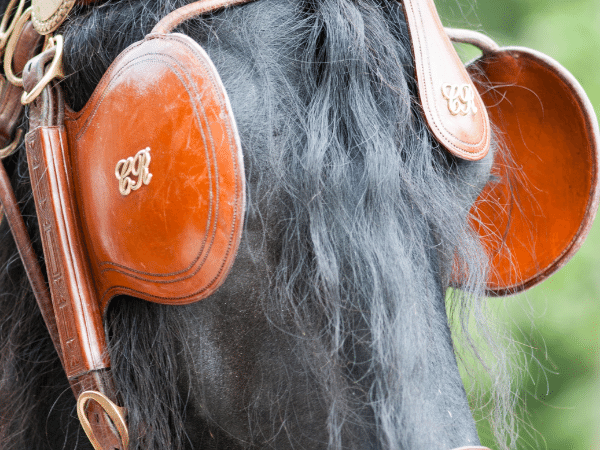
FAQs
What Eye Colors Can a Hore Have?
The majority (95%+) of horses have brown eyes. However, you may come across blue-eyed horses, especially among light-colored stock, such as paint horses and appaloosas. These account for 4% of all horses. The remaining 1% have unique eye colors ranging from green and yellow to grey and even violet.
Do Horses with Blue Eyes See Better?
No, horses with blue eyes see no better than their brown-eyed counterparts. They see just as clearly. However, blue eyes are more sensitive to sunlight and UV. This can cause visual challenges in sunny environments, necessitating sunlight and UV-shielding face covers.
Interesting read: How Does a Horse See?
Are Blue Eyes in Horses More Sensitive than Brown?
Yes, blue eyes are more sensitive than brown ones in horses, just like in humans. The irises are more translucent, allowing more light to penetrate the eye. This results in greater sensitivity. Moreover, blue-eyed horses often have pink skin under the eye. Pink skins are highly UV-sensitive.
Are Blue Eyes in Horses Rare?
Yes, blue eyes are rare in horses. You won’t easily find one, even in the open market. Moreover, buyers often grab few available quickly. So, you may have to ask around if you’re genuinely interested. Blue eyes are rarest among dark-colored and pure-white horses.
What Do You Call a White Horse with Blue Eyes?
There’s no special name for horses with blue eyes. Instead, you can refer to them by their breed or coat color. The most common blue-eyed breeds are American paint horses, appaloosas, and the Gypsy Vanner. Double-dilute individuals, particularly Cremellos and Perlinos, are the most likely to be blue-eyed.
Read also: What Color is a Roan Horse?
Summary
Horses can have blue eyes. However, it’s a rare trait most common in light-skinned individuals, particularly Cremello and Perlino horses.
Appaloosa and American Paint Horse breeds have the highest number of blue-eyed members.
Also, check our article “rarest horse colors” to learn more about unique and stunning horse coat colors that are sure to captivate your interest.




